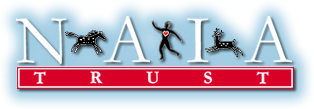People have trapped animals throughout their history for food, pelts, to protect themselves and prevent predation on pets and livestock. An active and lucrative trade in furs played a significant role in opening the US western frontier. The expansion of human population has displaced the native grounds on which many animal species once lived. In a perfect world, the animals would disperse to nearby wilderness areas. Unfortunately as urbanization progresses, little usable habitat remains in many parts of the country. The result is that in many areas today, wildlife management is absolutely essential.
Without the management tools of hunting and trapping, animals living on limited habitat overpopulate, develop diseases, starve and die. Furbearing animals are significant reservoirs for a number of highly infectious diseases that can be transmitted to people and other animals. Rabies and tularemia affect people and animals, and various species of domestic animals are susceptible to forms of distemper, parvovirus, mange and leptospirosis.
Surplus populations of animals can destroy timber stands, dam waterways, destroy dikes, flood farms and roadways, infest hay and grain storage silos, raid chicken coops and yards, serve as reservoirs for tick-borne diseases, and contribute to the elimination of myriad prey species. By managing these species so they do not overpopulate, a healthy number of animals can thrive without significant damage to the environment, to other species, to buildings, dikes, canals and other human developments. Therefore, NAIA supports responsible trapping as a necessary wildlife management tool using the most advanced scientific methods and humane equipment.
Suggested Reading
- National Trappers Association An organization of trappers to promote sound conservation, legislation and administrative procedures; promote sound environmental education programs; and support a continued annual fur harvest….
- NAIA
- NAIA: Animal rights activists gloss over trapping facts
- NAIA: Public Trust Doctrine legal cases challenge wildlife ballot initiatives that ban use of leghold traps

